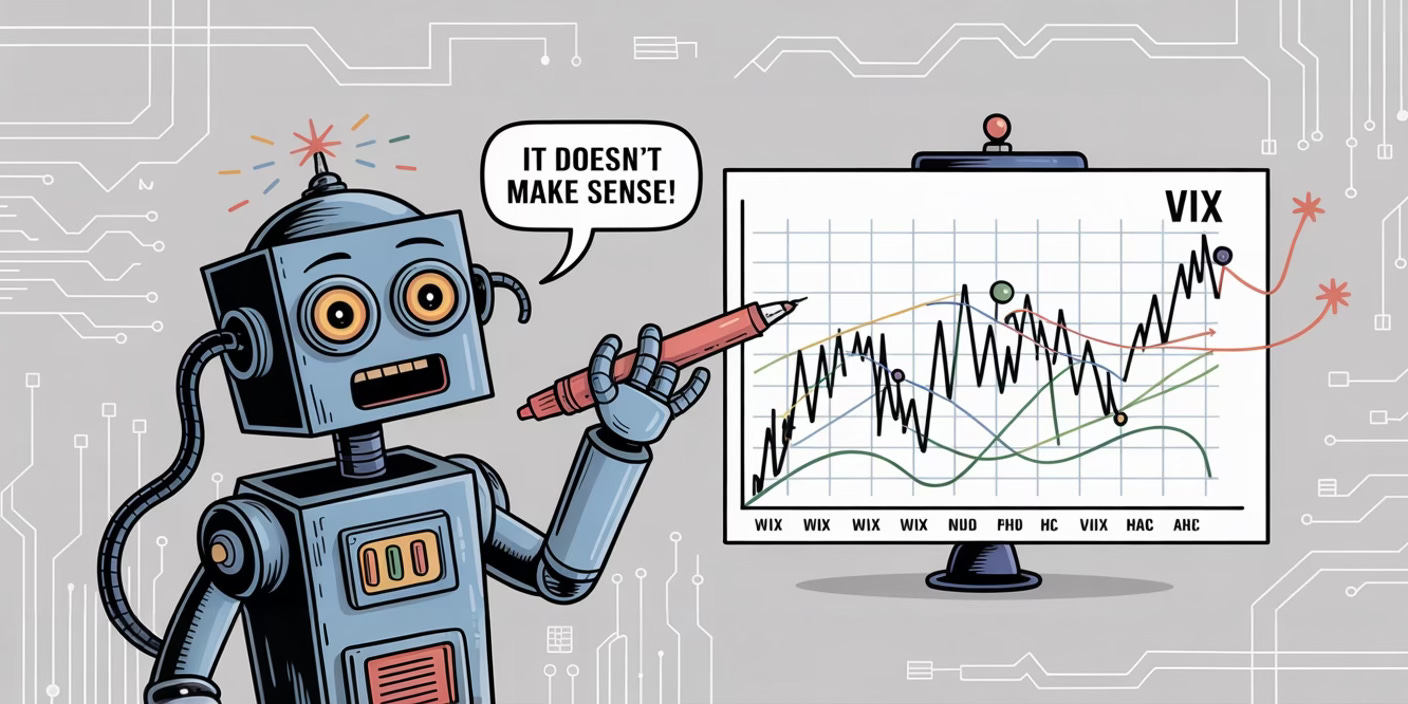Why Technical Analysis Doesn't work on the VIX
Technical analysis has long been a cornerstone of trading strategy, with countless traders relying on chart patterns, moving averages, and momentum indicators to navigate markets. But when it comes to the Volatility Index (VIX), these trusted tools often lead traders astray. Understanding why requires examining the fundamental nature of what the VIX actually represents and how it behaves.
The Fundamental Mismatch
At its core, the VIX isn't a price—it's a mathematical calculation. While stocks, bonds, and commodities represent ownership or claims on real assets with prices determined by supply and demand, the VIX measures the market's expectation of 30-day volatility, derived from S&P 500 index options. You can't buy or sell the VIX directly; it exists only as a statistical output.
This distinction matters enormously for technical analysis. When a moving average crossover signals a trend in a stock like Apple, it's reflecting genuine buying and selling pressure that can perpetuate momentum. When the same signal appears on a VIX chart, it's analyzing something that doesn't follow price dynamics at all—it's like trying to use a thermometer to measure wind speed.
The Pull of Mean Reversion
Perhaps no characteristic of the VIX frustrates technical traders more than its powerful tendency toward mean reversion. Unlike stocks that can trend higher for years or commodities that follow supply-demand cycles, volatility exhibits a reliable pattern: it spikes rapidly during market stress, then gradually decays back toward its historical average.
This behavior isn't random—it's structural. Fear arrives suddenly but dissipates slowly. Market panics are acute events, while calm markets are the norm. The VIX has spent most of its history between 15 and 20, with brief excursions higher during crises and occasional dips below during periods of extreme complacency.
Traditional trend-following indicators interpret these patterns incorrectly. A golden cross on the VIX chart might signal a bullish trend to a technical system, but in reality, an elevated VIX is already beginning its inevitable journey back to normalcy. The very indicators that capture trends in other markets become contrarian signals in volatility.
Statistical Properties That Break Traditional Models
The VIX operates within mathematical boundaries that don't apply to other financial instruments. It cannot go below zero—there's no such thing as negative implied volatility. It rarely sustains levels below 10 or above 40 for extended periods. These aren't just observations; they're statistical necessities rooted in how options are priced and how markets behave.
Moreover, the distribution of VIX movements is severely right-skewed. The index can spike from 15 to 45 in a single day during a market crash, but it almost never makes symmetric moves to the downside. This asymmetry violates core assumptions built into technical indicators designed for normally distributed price data. Bollinger Bands, RSI levels, and other indicators calibrated for typical price behavior produce false signals when applied to such a skewed distribution.
The Complexity of Volatility Products
The situation becomes even more complex when traders attempt to apply technical analysis to VIX-related products like futures, ETFs, or ETNs. These instruments don't track the spot VIX—they track futures contracts that have their own dynamics driven by term structure, roll yield, and time decay.
In contango markets (the normal state), VIX futures trade at premiums to spot, creating negative roll yield for long positions. Technical patterns on these products may diverge completely from patterns on the index itself. A VIX ETF might show a clear downtrend even as spot VIX remains unchanged, simply due to the mechanical decay from rolling futures contracts.
Alternative Approaches for Volatility Trading
Given these challenges, successful volatility traders abandon traditional technical analysis in favor of approaches designed specifically for the VIX's unique characteristics. Volatility regime analysis focuses on identifying whether markets are in low or high volatility states, rather than trying to predict directional moves. Term structure analysis examines the relationship between different maturity VIX futures to gauge market expectations and positioning.
Many professional volatility traders focus on the volatility risk premium—the tendency for implied volatility to overstate realized volatility. This approach involves systematic strategies that sell volatility during calm periods and reduce exposure during stress, based on statistical models rather than chart patterns.
Conclusion
The failure of technical indicators on the VIX isn't a flaw in the indicators themselves—it's a fundamental mismatch between tool and application. The VIX measures fear and uncertainty, mathematical constructs that don't behave like asset prices. Its mean-reverting nature, bounded range, skewed distribution, and the complexity of tradeable products all conspire to render traditional technical analysis not just ineffective, but often counterproductive.
For traders accustomed to reading price charts, this reality can be frustrating. But recognizing the VIX for what it truly is—a fear gauge and statistical measure rather than a tradeable price—opens the door to more appropriate analytical frameworks. In the world of volatility trading, success comes not from applying familiar tools to an unfamiliar instrument, but from understanding the unique dynamics at play and adapting accordingly.



